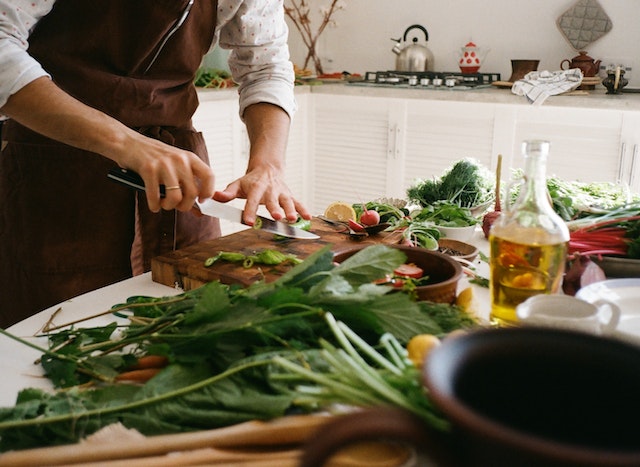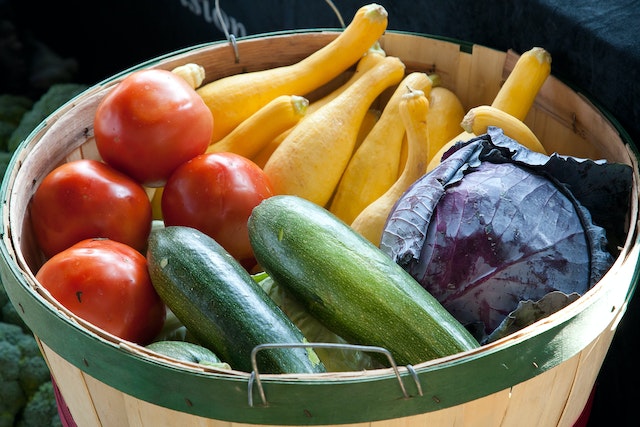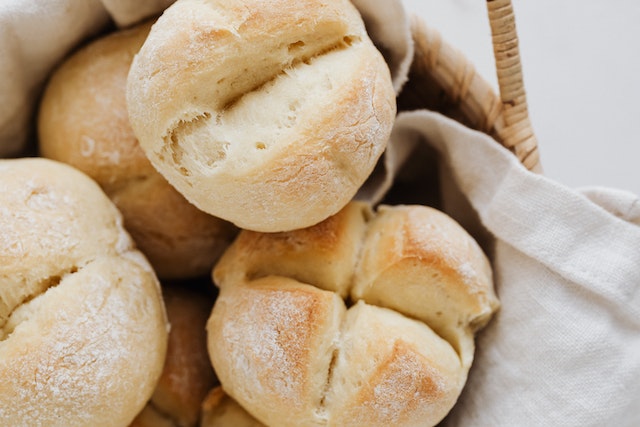
As the saying goes, failing to plan is planning to fail. This is especially true when it comes to eating healthy and reaching your fitness goals. Meal prepping is the key to ensuring that you have healthy, well-rounded meals at your fingertips throughout the week.
But how do you meal prep in bulk? It can be overwhelming to tackle a week’s worth of meals at once, but with a little planning and preparation, you can easily conquer it.
Planning for Bulk Meal Prepping
Planning for bulk meal prepping is the key to success, allowing you to save time, money, and make healthier choices. With a little bit of upfront planning and preparation, you can set yourself up for a week of delicious, well-balanced meals that will leave you feeling nourished and satisfied.
Assessing Dietary Needs and Goals:
To successfully meal prep in bulk, it is important to begin by assessing your dietary needs and goals. Are you looking to lose weight, gain muscle, or simply maintain a healthy lifestyle? Consider factors such as your caloric intake, macronutrient ratios, and any dietary restrictions or preferences you may have. By understanding your individual needs, you can tailor your meal prep to align with your specific goals.
Selecting Recipes and Creating a Meal Plan
Once you have a clear understanding of your dietary needs and goals, it’s time to select recipes and create a meal plan. A well-thought-out meal plan is like your blueprint for success. Look for recipes that incorporate a balance of protein, carbohydrates, and healthy fats, as well as a variety of fruits and vegetables. Consider the type of cuisine you enjoy and try to incorporate a mix of flavors and textures to keep your meals interesting throughout the week.
When creating your meal plan, think about how many meals you need for each day and whether you prefer to have leftovers for multiple days or prefer more variety. Take into account your schedule and choose recipes that are easy to prepare and store, particularly if you have a busy week ahead. Write down your meal plan and hang it somewhere visible, so you can easily reference it when it’s time to prep and cook.

MAKING A COMPREHENSIVE SHOPPING LIST
With your meal plan in hand, it’s time to make a comprehensive shopping list. Go through each recipe and write down all the ingredients you’ll need, including any necessary seasonings or spices. Be sure to check your pantry and fridge for items you already have to avoid unnecessary purchases.
When creating your shopping list, keep track of quantities and consider buying ingredients in bulk. Buying in bulk not only saves money but also allows you to have extra ingredients on hand for future meal prepping sessions. As you shop, stick to the perimeter of the grocery store where the fresh produce, meats, and dairy are usually located, avoiding the heavily processed aisles as much as possible.
Organizing Necessary Containers and Kitchen Tools
Lastly, organize the necessary containers and kitchen tools for your bulk meal prepping adventure. Invest in a range of different-sized meal prep containers to accommodate various portion sizes. Glass containers are a great option as they are durable, microwave-safe, and environmentally friendly. Additionally, ensure you have enough cooking utensils, pots, and pans to efficiently prepare your meals.
To streamline the process, consider labeling your containers with the meal and date to easily track freshness and rotate your meals accordingly. Having a set of reusable silicone bags or wrap can also come in handy for storing individual portions or separating ingredients.
By following these steps to plan for bulk meal prepping, you’ll set yourself up for success and make the process smoother and more efficient. When you have a well-organized meal plan, a comprehensive shopping list, and the necessary tools, you’ll find yourself enjoying delicious, healthy meals throughout the week without the stress of daily preparation.
Meal Prep Foods
When it comes to successful meal prepping, choosing the right foods is crucial. By selecting nutritious, versatile ingredients, you can create a variety of delicious meals that will keep you satisfied throughout the week. Here are some meal prep foods that are not only healthy but also lend themselves well to bulk preparation:
Lean Proteins
- Chicken breasts: A lean source of protein that can be grilled, baked, or shredded for various dishes.
- Ground turkey: Versatile and can be used in meatballs, tacos, or as a substitute for ground beef.
- Salmon: Packed with omega-3 fatty acids, this fish is great for heart health and can be roasted or grilled.
Whole Grains
- Quinoa: A protein-rich grain that can be used as a base for salads or as a side dish.
- Brown rice: A fiber-rich, nutritious option that pairs well with a variety of proteins and vegetables.
- Whole wheat pasta: A healthier alternative to traditional pasta, perfect for pasta salads or stir-fries.
Colorful Fruits and Vegetables
- Leafy greens: Spinach, kale, and arugula are packed with nutrients and can be used as a base for salads or sautéed as a side dish.
- Bell peppers: Versatile and can add a burst of color and flavor to stir-fries, fajitas, or roasted vegetable medleys.
- Berries: Full of antioxidants, berries are great for adding to overnight oats, yogurt bowls, or as a topping for salads.

Healthy Fats
- Avocado: Creamy and packed with healthy monounsaturated fats, perfect for adding to salads, wraps, or as a garnish for soups.
- Nuts and seeds: Almonds, walnuts, chia seeds, and flaxseeds are great sources of healthy fats and can be added to snacks or used as toppings.
Flavorful Herbs and Spices
- Garlic and onion: Essential for adding flavor to savory dishes, soups, and sauces.
- Cilantro, basil, or parsley: Fresh herbs that can be used as a garnish or in homemade sauces and dressings.
- Spices like cumin, paprika, and turmeric: Versatile and can add depth and complexity to your meals.
The great thing about these ingredients is they are pretty budget friendly. You won’t break the bank when shopping for these. Remember, the key to successful meal prepping is to choose ingredients that you enjoy and that align with your dietary goals. With a variety of proteins, grains, fruits, and vegetables, you can create endless combinations and flavors to keep your meals exciting and satisfying. Experiment with different recipes and don’t be afraid to get creative in the kitchen. Happy meal prepping!
Foods to Avoid
The path to successful meal prepping lies not only in choosing the right ingredients, but also in eliminating foods that can derail your health and fitness goals.
Fried Foods: While they may be tempting, fried foods are best avoided when meal prepping. They are often high in unhealthy fats and can lead to inflammation and weight gain.
Processed Snacks: Opt for whole foods instead of processed snacks. Processed snacks are usually high in sodium, added sugars, and unhealthy additives. They provide little nutritional value and can leave you feeling unsatisfied.
Sugary Drinks: Avoid sugary drinks like soda, fruit juices, and sports drinks. These beverages are loaded with added sugars and can contribute to weight gain and other health issues. Opt for water, unsweetened tea, or infused water for a refreshing and hydrating alternative.
White Bread: Choose whole grain bread instead of white bread. White bread is highly processed and lacks the fiber and nutrients found in whole grain alternatives. Whole grain bread will keep you feeling fuller for longer and provide sustained energy throughout the day.

Focus on incorporating whole foods like fruits, vegetables, lean proteins, whole grains, and healthy fats into your meals to support your health and wellness goals.
Batch Cooking Methods and Techniques
Batch cooking is the secret weapon of meal prepping in bulk. By utilizing efficient methods and techniques, you can maximize your time in the kitchen while still enjoying delicious, nutritious meals throughout the week. In this section, we will explore various batch cooking methods that will streamline your meal prep process, allowing you to conquer even the busiest of weeks.
One-Pot Wonders
One-pot wonders are a time-saving marvel. These recipes involve cooking an entire meal in a single pot or pan, minimizing cleanup and maximizing flavor. From hearty stews to flavorful stir-fries, the possibilities are endless. Simply chop your ingredients, sauté them, add your choice of protein, seasonings, and liquids, and let it simmer or bake to perfection. The beauty of one-pot wonders is that they can be easily scaled up to create larger portions, perfect for batch cooking.
Sheet Pan Sensations
Sheet pan meals are a game-changer for meal prepping in bulk. With a sheet pan, you can roast an array of ingredients simultaneously, saving both time and effort. Toss your favorite protein, such as chicken thighs or salmon fillets, with a variety of vegetables, herbs, and spices. Spread them out on a baking sheet and let the oven work its magic. Not only is this method efficient, but it also results in perfectly cooked, flavorful meals that will tantalize your taste buds.
Slow Cooker Magic
The slow cooker is a meal prepper’s best friend. This appliance allows you to set it and forget it. Simply throw your ingredients into the slow cooker, let them simmer for several hours, and return to a kitchen filled with enticing aromas and a ready-to-eat meal. Slow cooker recipes, such as chili, soups, or pulled pork, lend themselves well to bulk meal prep due to their large serving sizes. You can easily portion out the leftovers into individual containers for a week’s worth of effortless meals.
Frozen Delights
Freezing meals in advance is another excellent way to meal prep in bulk. When using this method, focus on recipes that freeze well and maintain their texture and taste upon reheating. Prepare large batches of lasagna, casseroles, or enchiladas, wrap them tightly, and store them in the freezer. Label each container with the dish’s name and cooking instructions for easy reference. When ready to enjoy, simply thaw and heat up your frozen delight for a convenient and satisfying meal.

Mix-and-Match Base Ingredients
To add variety and flexibility to your meal prep, batch cook a selection of versatile base ingredients. For example, cook a big batch of quinoa, brown rice, or whole wheat pasta. These grains can serve as a foundation for a variety of meals throughout the week. Similarly, roast an assortment of vegetables, such as sweet potatoes, broccoli, and bell peppers. These prepared ingredients can be used as side dishes, salad toppers, or in stir-fries, adding flavor and nutrition to your meals in an instant.
Portioning and Storing Meals
Part of learning how to meal prep in bulk is tackling the final step – portioning and storing your meals. By properly portioning and storing your meals, you can ensure that they stay fresh and flavorful throughout the week, while also saving time and effort when it’s time to eat. Follow these tips and tricks to master the art of portioning and storing your meals like a pro.
Invest in the Right Containers: When it comes to storing your prepped meals, choosing the right containers is essential. Look for sturdy, BPA-free containers that are leak-proof and able to withstand both the refrigerator and freezer. Glass containers are a great option as they are durable, microwave-safe, and environmentally friendly. Additionally, consider using compartmentalized containers for easy separation of different ingredients.
Portion Control: Proper portion control is crucial for maintaining a balanced diet and reaching your health and fitness goals. Use measuring cups, a kitchen scale, or portion control containers to ensure that you are accurately measuring your meals and sticking to your desired portion sizes. This will help prevent overeating and keep your calorie intake in check.
Label and Date: To stay organized and avoid confusion, label each container with the meal’s name and the date it was prepared. This will allow you to easily identify and rotate your meals, ensuring that you consume them in a timely manner. Use removable labels or masking tape and a marker to make labeling a breeze.
Refrigerator Storage: Most cooked meals can be stored in the refrigerator for up to 4-5 days, depending on the ingredients used. It’s important to let your meals cool to room temperature before transferring them to the refrigerator to prevent condensation and bacterial growth. Keep your meals in the main body of the refrigerator, away from the door where temperatures fluctuate more frequently.
Freezer Storage: If you’ve prepped more meals than you can consume in a few days, freezing is a great option to extend their shelf life. Ensure that your meals are fully cooled before freezing to prevent freezer burn. Portion out your meals into individual containers or freezer-safe bags, removing any excess air. Label each container with the meal’s name and the date of freezing. Properly stored, most meals can be frozen for up to 3 months.

Thawing and Reheating: When it’s time to enjoy your prepped meals, it’s essential to follow proper thawing and reheating techniques. For refrigerator-stored meals, simply remove the container from the fridge and let it come to room temperature before reheating. Use a microwave, stovetop, or oven to reheat your meals until they reach a safe internal temperature (165°F). For frozen meals, transfer them to the refrigerator the night before to allow for slow thawing. Alternatively, thaw them in the microwave using the defrost setting before reheating.
Fresh Additions: To keep your meals exciting and prevent monotony, consider adding fresh ingredients just before serving. This can include a handful of greens, a squeeze of lemon or lime juice, or a sprinkle of fresh herbs. Not only will this add a burst of flavor, but it will also add texture and visual appeal to your meals.
Learning how to meal prep in bulk is a simple and efficient way to ensure that you have healthy, delicious meals at your fingertips throughout the week. With a little bit of upfront planning and preparation, you can set yourself up for a week of nourishing and satisfying meals that align with your dietary goals. So, grab your containers, sharpen your knives, and get ready to embark on a culinary journey that will not only simplify your life but also delight your taste buds. Happy meal prepping!
